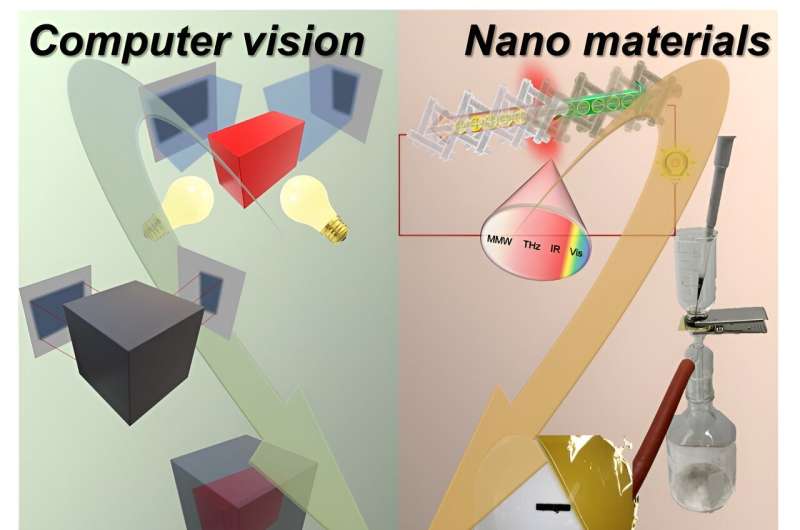Novel non-destructive inspection technique reconstructs inner hidden composition and structure of inspection targets

A research group at Chuo University, Japan, led by Assistant Professor Kou Li (Faculty of Science and Engineering), in collaboration with National Institute of Informatics, have developed a novel non-destructive inspection technique by effectively combining their own multi-functional photo monitoring device and system with image data-driven three-dimensional (3D) restoration methods. The technique precisely evaluates target objects by compositional identifications and structural reconstructions.
Their paper is in Advanced Optical Materials.
Since the dawn of the IoT (Internet of Things) society, non-destructive inspection techniques have garnered attention to assure fundamental safety in cyber and physical interactions by detecting concealed defects of daily and industrial components. In particular, photo-imaging methods play core roles in non-destructive inspections for their non-contact and large-area (i.e., informative) data acquisition.
Meanwhile, representative inspecting points include compositional identifications (what materials target objects and their concealed defects comprise) and structural reconstructions (how and which shapes the above materials form). Although efforts, collectively satisfying the compositional identifications and structural reconstructions, potentially facilitate precise and reliable social quality testing, studies demonstrating the above concepts are still insufficient.
To tackle such crucial technical limitations, this work developed an unconventional non-destructive inspection platform that could provide a breakthrough in the study field of safety and quality testing.
In this work, Kou Li, the leader of the collaborative research group, effectively combined the sensing device and system for compositional identifications uniquely developed in Chuo University by employing cutting-edge nanomaterials: Japan-origin carbon nanotubes (CNT), with 3D structural reconstruction schemes in NII that were simply based on superposition of silhouette images from target objects.
More information: Kou Li et al, Simple Non鈥怐estructive and 3D Multi鈥怢ayer Visual Hull Reconstruction with an Ultrabroadband Carbon Nanotubes Photo鈥怚mager, Advanced Optical Materials (2023).
Provided by Chuo University















